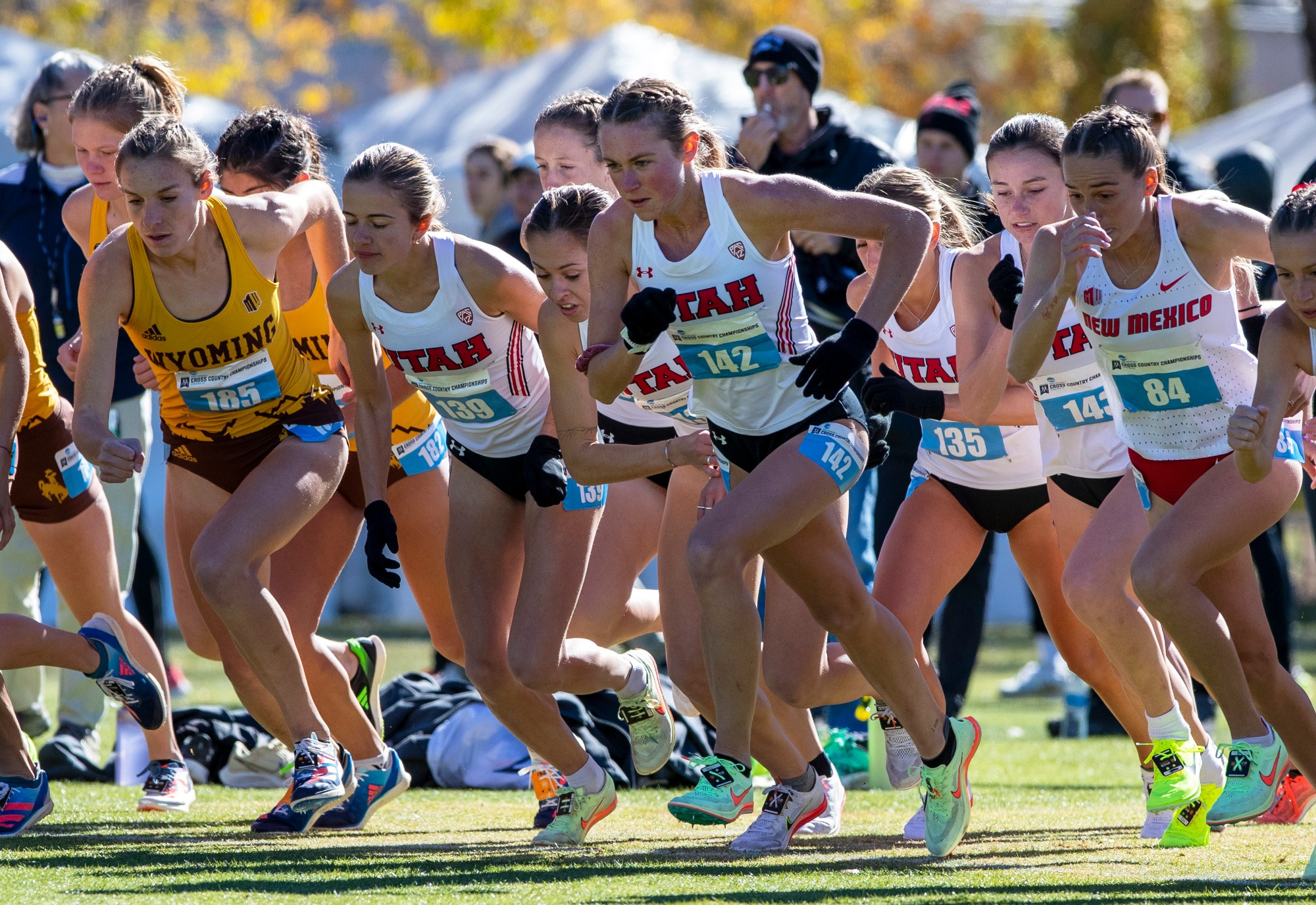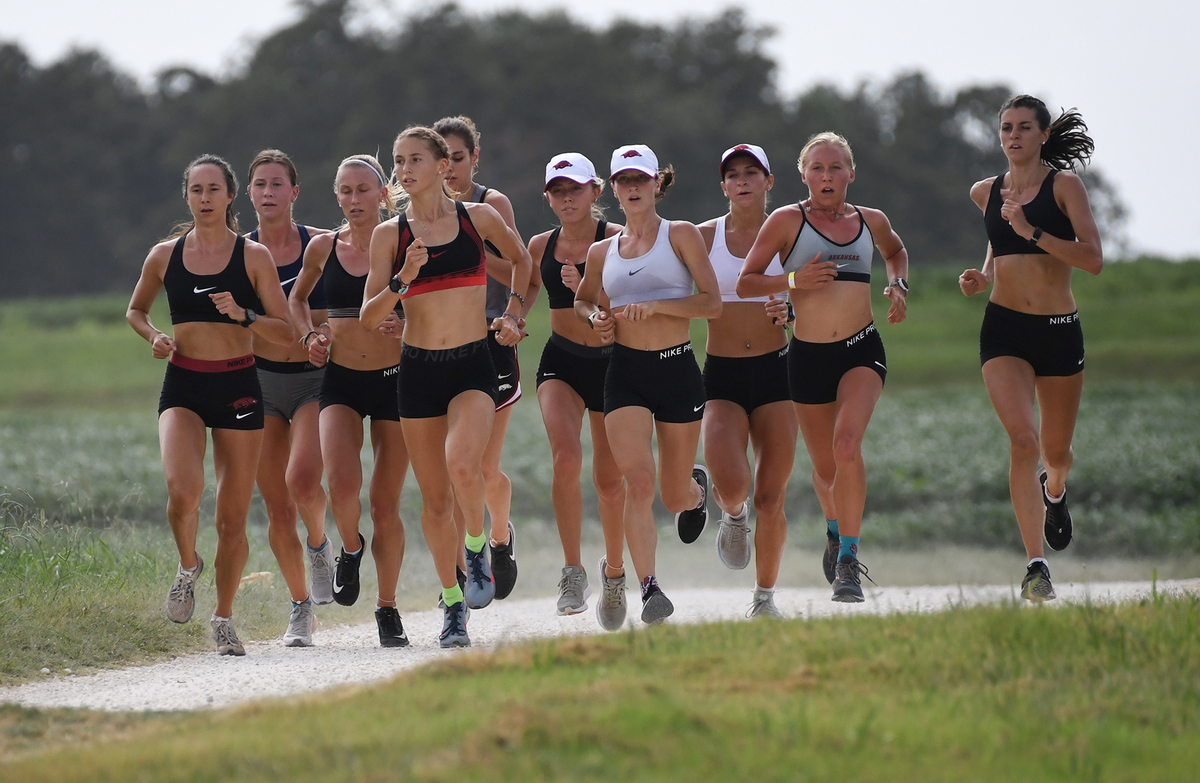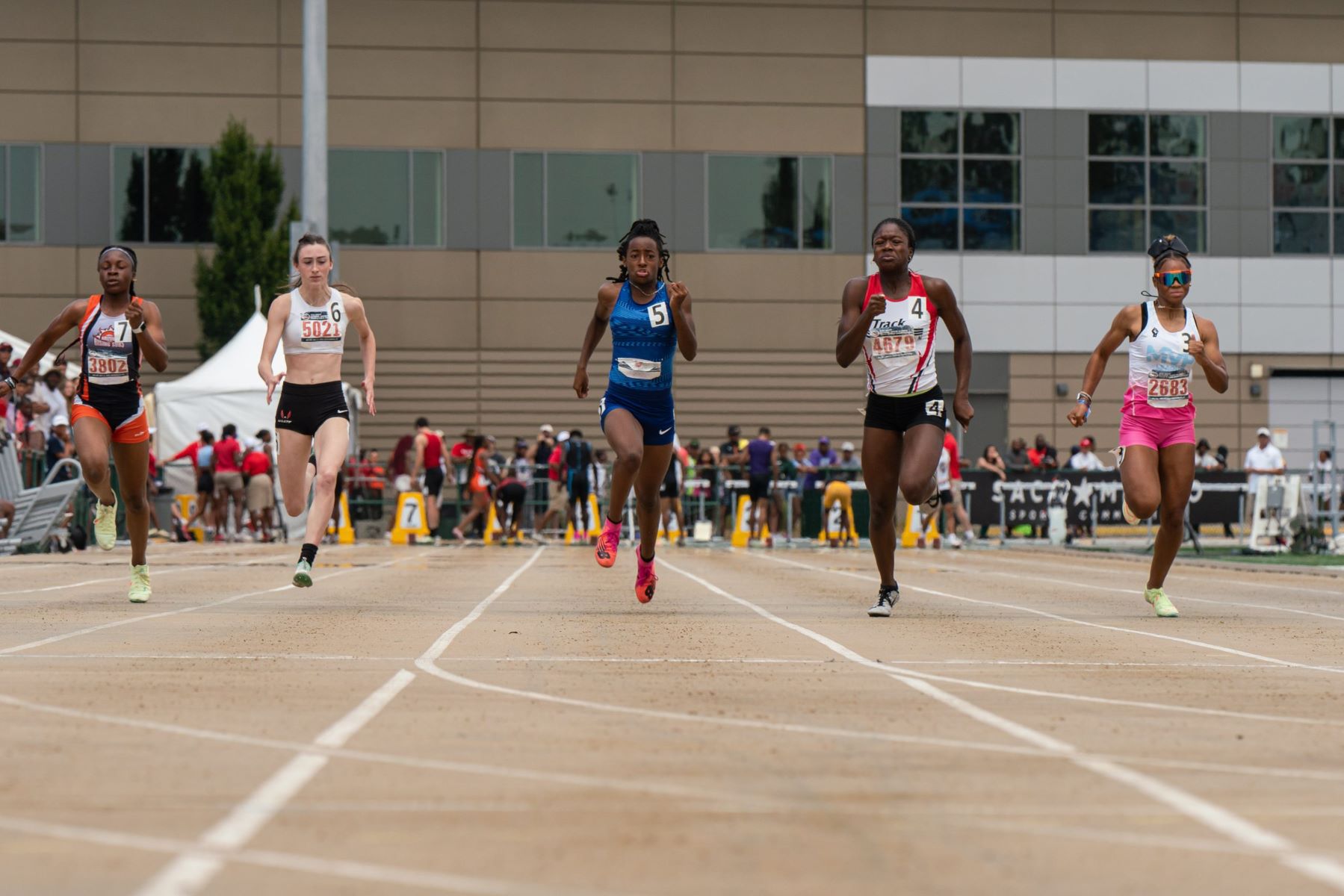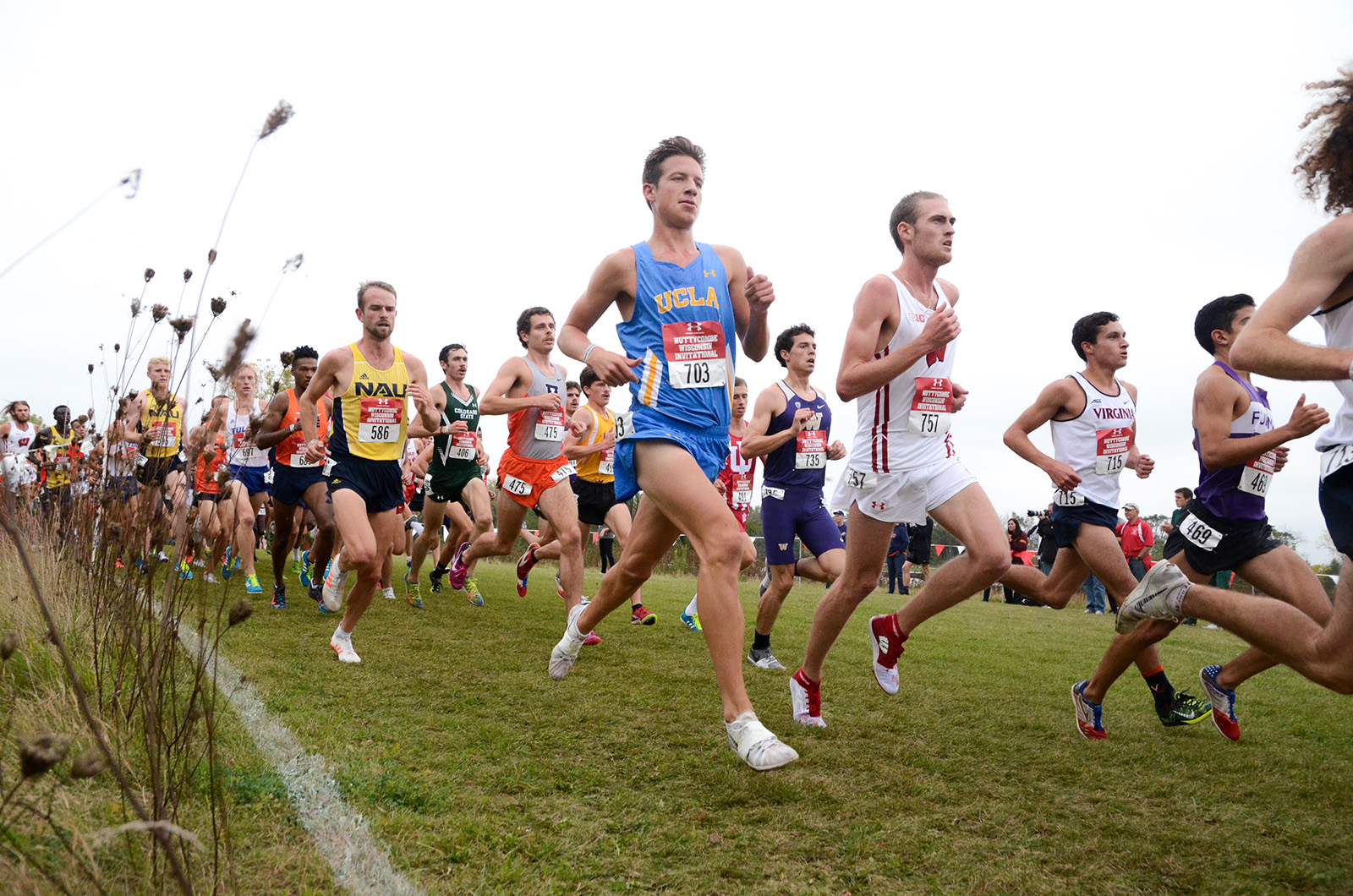

Featured
How To Get A Cross Country Scholarship
Modified: January 2, 2024
Learn how to secure a cross country scholarship with our featured guide, providing valuable tips and insights for aspiring athletes. Start your journey towards higher education and athletic success today!
Introduction
Welcome to the world of cross country scholarships! If you’re a talented cross country runner with dreams of competing at the collegiate level, this article is for you. Cross country scholarships can provide not only financial assistance but also a platform to showcase your skills and pursue your passion. In this guide, we will take you through the step-by-step process of how to secure a cross country scholarship.
Cross country is a demanding sport that requires endurance, strength, and mental fortitude. It’s not just about running long distances; it’s about pushing your limits, competing against the clock, and striving for personal bests. College coaches across the country recognize the dedication and hard work that goes into being a successful cross country athlete, and they are actively searching for talented individuals to join their teams.
While the prospect of earning a cross country scholarship can be exciting, it’s important to understand that the competition is fierce. Colleges receive numerous applications from aspiring athletes, each vying for limited scholarship opportunities. Therefore, it’s crucial to approach the process strategically and take proactive steps to stand out from the crowd.
Throughout this article, we will provide you with comprehensive guidance on how to navigate the cross country scholarship journey. From researching scholarships to reaching out to college coaches and completing applications, we will cover all the essential aspects that can increase your chances of securing a scholarship offer.
Remember, the pursuit of a cross country scholarship requires dedication, perseverance, and a strong work ethic. It’s an opportunity to showcase not only your athletic abilities but also your character, leadership skills, and academic achievements. So, without further ado, let’s dive into the steps you need to take to make your cross country scholarship dreams a reality.
Step 1: Researching Cross Country Scholarships
Before you begin your quest for a cross country scholarship, it’s essential to conduct thorough research to identify potential opportunities. Here are some key steps to help you get started:
- Explore College Athletics Websites: Start by visiting the websites of colleges and universities that you’re interested in. Navigate to the athletics department section to find specific information about cross country scholarships they offer. Look for details regarding scholarship criteria, application deadlines, and contact information.
- Utilize Online Scholarship Databases: In addition to college websites, there are various online scholarship databases that can help you find cross country scholarship opportunities. Websites like NCAA.org, CollegeBoard.org, and FastWeb.com provide search filters to narrow down scholarships based on your sport, academic standing, and other criteria.
- Reach Out to High School Coaches: Your high school cross country coach can be an invaluable resource in your scholarship search. They often have connections with college coaches and can provide guidance on potential scholarship opportunities. Schedule a meeting with your coach to discuss your ambitions and seek their advice.
- Attend College Fairs and Showcases: College fairs and showcases provide a platform for high school athletes to interact with college coaches from various institutions. Take advantage of these events to learn about cross country programs and scholarship opportunities. Prepare a highlight reel, compile your performance statistics, and have copies of your academic transcript and resume on hand to share with coaches.
- Network with Current College Athletes: Connect with current college athletes who are participating in cross country programs. Reach out to them through social media platforms or attend college sporting events to establish connections. They can provide insights into the scholarship process and offer advice based on their personal experiences.
- Consider NAIA and Junior College Programs: Don’t limit your options to NCAA Division I schools. The National Association of Intercollegiate Athletics (NAIA) and junior college programs also offer cross country scholarships. Research these alternative options to expand your potential opportunities.
By thoroughly researching cross country scholarship opportunities, you’ll have a better understanding of the schools and programs that align with your athletic and academic goals. This knowledge will help you narrow down your options and focus on the ones that offer the best fit for your aspirations.
Step 2: Building a Strong Athletic Profile
Once you’ve identified potential cross country scholarship opportunities, it’s time to focus on building a strong athletic profile that will grab the attention of college coaches. Here are some key steps to help you showcase your skills and abilities:
- Train and Compete at a High Level: Cross country scholarships are typically awarded to athletes who consistently perform well and show potential for improvement. Dedicate yourself to rigorous training, follow a structured workout plan, and compete in high-level meets to showcase your abilities.
- Set Personal Goals: Identify specific goals you want to achieve in your cross country career. Whether it’s beating your personal record or qualifying for a prestigious event, having clear objectives will motivate you to push harder and demonstrate your commitment to the sport.
- Maintain Strong Academic Performance: College coaches are not just interested in your athletic abilities; they also consider your academic achievements. Maintain good grades and strive for academic excellence to show coaches that you are a well-rounded student-athlete.
- Create an Athletic Resume: Develop a professional-looking athletic resume that highlights your cross country achievements, including personal records, race results, and accolades. Include relevant information such as your height, weight, and other physical attributes. Additionally, include a brief bio that showcases your dedication and passion for the sport.
- Compile a Highlight Video: Capture your best cross country performances on video to create a compelling highlight reel. Include footage from races where you excelled, showcasing your running form, endurance, and tactical decision-making skills. Make sure the video is high-quality and highlights your strengths as an athlete.
- Participate in Cross Country Camps and Clinics: Attend cross country camps and clinics to improve your skills, learn from experienced coaches, and network with other athletes. These events provide opportunities to showcase your talent in front of college coaches who may be in attendance.
- Seek Feedback and Guidance: Reach out to your high school cross country coach or consider hiring a personal coach who can provide feedback on your technique, training, and race strategy. Having someone knowledgeable to guide you can significantly enhance your athletic profile.
Remember, building a strong athletic profile takes time and consistent effort. It’s important to approach your training and competition with commitment and determination. The stronger your athletic profile, the more likely you are to catch the attention of college coaches and increase your chances of securing a cross country scholarship.
Step 3: Reaching out to College Coaches
Now that you have built a strong athletic profile, it’s time to proactively reach out to college coaches to express your interest and showcase your abilities. Here are some key steps to help you navigate this crucial stage of the scholarship process:
- Identify Target Schools: Based on your research and personal preferences, narrow down your list of target schools. Consider factors such as the school’s cross country program, academic offerings, location, and campus culture. Select a mix of reach, target, and safety schools to maximize your options.
- Find Coach Contact Information: Visit the athletics department section of each school’s website to find contact information for the cross country coaches. Take note of their names, email addresses, and phone numbers. Pay attention to any specific instructions provided for contacting coaches.
- Personalize Your Communication: When reaching out to coaches, personalize your messages instead of using generic templates. Address them by name, mention specific details about the program that interest you, and explain why you believe you would be a valuable addition to their team.
- Highlight Your Achievements: Briefly mention your athletic achievements in your communication with coaches. This can include personal records, notable race results, and any awards or honors you have received. Provide evidence of your commitment and determination to excel in cross country.
- Express Interest in the School: Show genuine interest in the school and its academic offerings. Research the academic programs or majors that you are interested in and mention them in your message. Coaches appreciate athletes who value education and are passionate about their chosen field of study.
- Follow Up Appropriately: After sending your initial message, give coaches some time to respond. If you haven’t heard back after a reasonable period, send a polite follow-up email to inquire if they received your message. Avoid being pushy or demanding and maintain a professional and respectful tone.
- Attend College Showcases: Some colleges organize showcases or recruiting events where you can meet coaches in person and showcase your skills. Attend these events if possible and make sure to introduce yourself and make a positive impression. Collect business cards or contact information from coaches you meet.
- Respond Promptly to Coach Inquiries: If a coach reaches out to you expressing interest, respond promptly and professionally. Be prepared to provide additional information, such as academic transcripts, test scores, and references, as requested. This demonstrates your commitment and reliability.
Remember, the process of reaching out to college coaches requires patience, persistence, and professionalism. Not all coaches will respond to your initial inquiry, and that’s okay. Focus on building relationships with the coaches who show genuine interest in you and continue to showcase your skills through consistent training and competition performances.
Step 4: Preparing for the Recruiting Process
As you navigate the cross country scholarship process, it’s important to properly prepare for the recruiting process. This step involves organizing and managing your recruiting materials, understanding the rules and regulations, and staying proactive throughout. Here are some essential steps to help you prepare:
- Gather and Organize Recruiting Materials: Collect and organize all the necessary documents for the recruiting process. This includes your athletic resume, highlight videos, transcripts, SAT/ACT scores, and any other relevant information that coaches may require.
- Understand NCAA Rules and Regulations: If you plan to compete in the NCAA, familiarize yourself with the recruiting rules and regulations set by the organization. Understand the contact periods, dead periods, and guidelines for official and unofficial visits. Staying compliant with these rules is crucial to maintain eligibility.
- Prepare for Campus Visits: As you narrow down your list of potential schools, schedule campus visits to get a firsthand experience of the college environment. Reach out to coaches to coordinate these visits and make the most out of the opportunity to meet with the coaching staff, tour the facilities, and learn more about the cross country program.
- Communicate with Coaches Regularly: Keep the lines of communication open with coaches throughout the recruiting process. Provide updates on your competition results, improvements in your training, and any new achievements. Regular communication shows your commitment and interest in the program.
- Attend College Athletic Showcases: Consider attending college athletic showcases specifically designed for recruiting purposes. These events bring together coaches and athletes, allowing you to showcase your skills and make connections with potential college programs.
- Consider Hiring a Recruiting Consultant: If you feel overwhelmed or unsure about navigating the recruiting process, consider hiring a recruiting consultant who specializes in helping athletes secure scholarships. These professionals can provide guidance, review your materials, and offer expertise to enhance your chances of success.
- Stay Organized: Keep a calendar to track important recruiting dates, such as application deadlines and official visit opportunities. Respond to emails and requests from coaches promptly and stay organized with your documents and communication records.
- Follow the Coaches’ Instructions: Each coach may have specific instructions or requirements for their recruiting process. Follow these instructions carefully and provide all the requested materials. Attention to detail and adherence to their guidelines demonstrate your ability to follow instructions and show respect.
Preparing for the recruiting process involves staying organized, staying informed, and effectively managing your interactions with coaches. By following these steps, you will position yourself for success and increase your chances of securing a valuable cross country scholarship.
Step 5: Navigating the NCAA Eligibility Center
If your goal is to compete in the NCAA, it is crucial to navigate the NCAA Eligibility Center. This step ensures that you meet the academic and amateurism requirements set by the NCAA. Here’s how to navigate the Eligibility Center:
- Create an Account: Visit the NCAA Eligibility Center website and create an account. This will allow you to access the necessary resources and begin the process of determining your eligibility.
- Fulfill Academic Requirements: Familiarize yourself with the NCAA academic requirements, including core course requirements and minimum GPA and SAT/ACT score standards. Ensure that you are taking the appropriate courses and maintaining good academic standing throughout high school.
- Submit Required Documents: The NCAA Eligibility Center requires certain documents to verify your eligibility, such as high school transcripts and standardized test scores. Follow the instructions provided on the website to submit these documents in a timely manner.
- Monitor your Progress: Regularly check your eligibility status on the NCAA Eligibility Center website. Take note of any updates or additional requirements that may be necessary to maintain eligibility.
- Communicate with your High School Counselor: Work closely with your high school counselor to ensure that your academic records, course schedules, and transcripts are sent to the NCAA Eligibility Center in a timely and accurate manner.
- Seek Guidance from your Coach: Consult with your high school cross country coach or seek guidance from a recruiting consultant to navigate the NCAA Eligibility Center. They can provide valuable insights and ensure that you are meeting all the necessary requirements.
- Respond to Requests for Additional Information: The NCAA Eligibility Center may request additional information throughout the evaluation process. Be prompt in responding to these requests and provide the necessary documentation or clarification as needed.
- Stay Informed about Eligibility Rules and Updates: The eligibility rules and requirements set by the NCAA can change, so it’s important to stay updated. Attend informational sessions, read relevant publications, and stay in communication with your high school counselor and coaches to stay informed about any changes that may impact your eligibility.
Successfully navigating the NCAA Eligibility Center is essential for becoming eligible to compete in NCAA cross country programs. By understanding the requirements, submitting the necessary documents, and staying proactive throughout the process, you are setting yourself up for NCAA eligibility and increasing your chances of securing a cross country scholarship.
Step 6: Showcasing Your Skills at Competitive Meets
Competing at high-level meets is an essential step in the process of securing a cross country scholarship. This is where you have the opportunity to showcase your skills and catch the attention of college coaches. Here’s how to effectively showcase your abilities at competitive meets:
- Select the Right Meets: Choose competitive meets that attract college coaches and have a strong reputation in the cross country community. Look for meets that showcase top talent and provide an opportunity to compete against strong competition.
- Prepare Mentally and Physically: Approach each meet with a focused and determined mindset. Engage in pre-race routines that help you relax, visualize success, and build confidence. Physically prepare by following a structured training plan, fueling your body with proper nutrition, and getting adequate rest leading up to the meet.
- Race Strategically: Develop race strategies based on your strengths and the course conditions. Analyze the competition and plan your pacing, positioning, and finishing kick accordingly. Focus on executing your strategy, staying mentally tough, and maintaining a competitive mindset throughout the race.
- Show Sportsmanship and Respect: Display good sportsmanship and respect towards your competitors, officials, and coaches. Be gracious in both victory and defeat, and treat others with kindness and professionalism. College coaches not only observe your performance but also note your character and how you interact with others.
- Aim for Personal Bests: Strive to achieve personal best times and surpass your previous records. Setting new personal records demonstrates your commitment to improvement and your potential for continued success. It also provides evidence of your dedication and work ethic.
- Overcome Challenges: Cross country races can present various challenges, such as tough weather conditions or difficult courses. Adapt to these challenges and demonstrate your ability to persevere and perform under pressure. College coaches value athletes who can handle adversity and maintain composure during races.
- Engage with Coaches: Be approachable and open to interacting with college coaches at meets. If a coach expresses interest in you, take the initiative to introduce yourself, express your interest in their program, and ask questions about their coaching philosophy and team dynamics.
- Review and Analyze Your Race Performance: After each meet, take the time to review and analyze your race performance. Reflect on what went well and areas for improvement. Take note of split times, pacing strategies, and tactical decisions. Use these insights to fine-tune your training and racing strategies for future meets.
Competitive meets provide a platform for you to demonstrate your cross country skills and catch the attention of college coaches. By selecting the right meets, preparing mentally and physically, strategizing your races, displaying good sportsmanship, and striving for personal bests, you increase your chances of leaving a lasting impression on coaches and securing a cross country scholarship.
Step 7: Securing Recommendation Letters
Securing strong recommendation letters is an important step in the cross country scholarship process. These letters provide valuable insights into your character, work ethic, and athletic abilities from individuals who have observed your dedication to the sport. Here’s how to secure compelling recommendation letters:
- Choose the Right Recommenders: Identify individuals who can provide a genuine and comprehensive assessment of your cross country skills and character. Consider coaches, trainers, teachers, or mentors who have closely worked with you and can speak to your abilities and qualities.
- Cultivate Relationships: Build strong relationships with potential recommenders over time. Show dedication, respect, and a willingness to learn from their guidance. By developing strong connections, you increase the likelihood that they will write detailed and supportive recommendation letters on your behalf.
- Request Letters in a Timely Manner: Approach potential recommenders well in advance of the scholarship application deadlines. Send courteous and professional requests, clearly outlining the purpose of the recommendation letter and providing them with ample time to write it.
- Provide Relevant Information and Materials: Supply recommenders with necessary information to help them write persuasive letters. This may include your athletic resume, highlight videos, performance stats, and a summary of your accomplishments. These materials will refresh their memory and enable them to write specific and tailored letters.
- Articulate Your Goals and Aspirations: Discuss your goals and aspirations in cross country and emphasize why you believe a scholarship would be important in helping you achieve them. By providing context and clarity, recommenders can highlight your passion and dedication to the sport in their letters.
- Follow Up and Express Gratitude: After requesting recommendation letters, follow up with a polite reminder closer to the deadline to ensure they are submitted on time. Once the letters are submitted, express your gratitude by sending personalized thank-you notes to your recommenders.
- Provide Clear Instructions for Submission: If recommendation letters need to be submitted electronically or through a specific platform, provide clear instructions to your recommenders. Make it as easy as possible for them to submit the letters and ensure that they do so before the deadline.
- Keep Recommenders Informed: Inform recommenders of any updates regarding your scholarship pursuit or college decisions. They will appreciate staying in the loop and may be able to provide further support or guidance throughout the process.
Securing strong recommendation letters is a crucial component of your cross country scholarship application. By choosing the right recommenders, cultivating relationships, providing relevant information, and following up with gratitude, you increase the chances of receiving compelling letters that showcase your abilities and enhance your prospects of securing a scholarship.
Step 8: Completing the Scholarship Application
Completing the scholarship application is a critical step in the cross country scholarship process. It’s important to approach the application with attention to detail, ensuring that you provide all the necessary information accurately and effectively. Here’s a guide to help you complete your scholarship application:
- Read Instructions Carefully: Take the time to read the scholarship application instructions thoroughly. Understand the requirements, deadlines, and any specific documents or essays that are needed.
- Organize Required Documents: Gather all the required documents, such as your athletic resume, recommendation letters, academic transcripts, and standardized test scores. Keep them organized and readily accessible for quick reference when completing the application.
- Provide Accurate and Detailed Information: Fill out the application form with accurate and detailed information. Double-check your entries for any errors or omissions before submitting. Pay attention to formatting and follow any specified guidelines for document submission.
- Craft a Compelling Essay: If the scholarship application requires an essay, take the time to craft a compelling and authentic piece. Share your cross country journey, the challenges you’ve overcome, and your goals for the future. Highlight how receiving the scholarship would make a significant impact on your athletic and academic journey.
- Proofread and Edit: Once you’ve completed the application, proofread it carefully. Look for any grammatical or spelling errors and make necessary edits. Consider asking a trusted friend, teacher, or family member to review and provide feedback on your application before submitting.
- Submit Your Application On Time: Pay close attention to the application deadline and submit your application well before the cutoff. This ensures that any technical issues or unforeseen circumstances can be addressed without jeopardizing your chances of consideration.
- Keep Copies of Your Application: Make copies of your completed scholarship application for your records. Save electronic copies and keep hard copies in a safe place. These copies can be helpful in case there are any discrepancies or if you need to reference your application in the future.
- Follow Up: After submitting your application, follow up with the scholarship committee or organization to ensure they have received all the required documents. Express your gratitude for the opportunity and indicate your continued interest in their scholarship program.
Completing the scholarship application is your opportunity to present yourself as a deserving candidate for a cross country scholarship. By carefully adhering to the instructions, providing accurate information, and submitting a well-crafted application, you increase your chances of standing out among other applicants and securing a valuable scholarship.
Step 9: Following Up and Staying Persistent
Following up and staying persistent throughout the cross country scholarship process is essential to maximize your chances of success. By maintaining communication, showing continued interest, and demonstrating your dedication, you can leave a lasting impression on college coaches. Here’s how to follow up and stay persistent:
- Send Thank-You Notes: After communication or interaction with coaches, send personalized thank-you notes to express your gratitude and appreciation. This demonstrates professionalism and acknowledges their time and effort in considering your scholarship application.
- Provide Updates on Your Achievements: Keep coaches informed of any notable accomplishments, such as personal records, improvements in performance, or academic achievements. Regularly update them on your progress to showcase your continuous dedication to your sport and academic pursuits.
- Attend College Camps and Clinics: Many colleges offer camps and clinics for prospective student-athletes. Attend these events to gain exposure and enhance your skills while establishing connections with college coaches. Engage in conversations and showcase your abilities during these opportunities.
- Respond Promptly to Coach Inquiries: If a coach reaches out to you expressing interest or requesting additional information, respond promptly and professionally. Show your commitment and reliability by providing the requested materials in a timely manner.
- Follow Up on Scholarship Deadlines: Stay informed about scholarship deadlines and follow up with the scholarship committees to confirm receipt of all required materials. Inquire about the timeline for announcing scholarship recipients and express your continued interest in the program.
- Consider Alternative Options: If you encounter challenges or receive rejections from certain schools or programs, don’t get discouraged. Explore alternative options, such as NAIA schools, junior colleges, or other institutions that may offer cross country scholarships. Stay persistent and open to different opportunities.
- Stay in Contact with Your High School Coach: Maintain a strong relationship with your high school cross country coach. Seek their guidance, advice, and support throughout the scholarship process. They can advocate for you and provide valuable insights based on their experience and connections in the cross country community.
- Continuously Improve Your Skills: Remain committed to consistently improving your cross country skills and performance. Dedicate yourself to regular training, seek feedback from coaches, and focus on areas that need refinement. By demonstrating continuous growth, you enhance your value as a prospective scholarship recipient.
Following up and staying persistent shows your genuine interest, dedication, and professionalism in pursuing a cross country scholarship. By providing updates, attending events, responding promptly, and exploring alternative options, you maximize your chances of receiving a scholarship offer. Remember to maintain a positive attitude and continue giving your best effort throughout the process.
Conclusion
Congratulations on completing the journey to secure a cross country scholarship! By following the step-by-step process outlined in this guide, you have positioned yourself for success in pursuing your athletic and academic aspirations. Remember, obtaining a cross country scholarship requires dedication, perseverance, and maintaining a proactive approach.
From researching scholarships and building a strong athletic profile to reaching out to college coaches and completing the application, each step is crucial in increasing your chances of securing a scholarship. Throughout this journey, it’s essential to showcase your skills, exhibit good sportsmanship, maintain strong academic performance, and develop meaningful connections with coaches and recommenders.
Keep in mind that the competition for cross country scholarships can be fierce. Not every athlete will receive a scholarship offer, but don’t let that deter you from pursuing your goals. Consider all opportunities, including alternative options such as NAIA or junior college programs, to continue your athletic and academic journey.
Finally, remember that cross country is more than just a sport – it’s a journey of personal growth, resilience, and determination. Embrace the challenges, celebrate the victories, and continue to push your limits. Your dedication to cross country will not only open doors for scholarship opportunities but also provide you with lifelong lessons and experiences that will shape your future.
Wishing you all the best as you embark on this exciting cross country scholarship pursuit. Stay focused, stay motivated, and never stop chasing your dreams on and off the track!









